Should you buy euros before your trip to Europe?
Americans heading off on a trip to Europe often wonder whether or not they should buy euros back home before taking off. Naturally, the thought of leaving for a foreign country without a single piece of foreign currency in your pocket can be an unnerving one. You can feel so, well, naked!
So should you buy euros before leaving? And if so, where?
It’s a great question — and it depends upon on a few factors. But first, my general rule of thumb:
Generally speaking… no need.
In most cases for Americans heading off to major European destinations, my answer is to just say “no” to buying euros in advance in the States. Unless you have a great bank that doesn’t charge for the service — and gives real exchange rates, not lousy inflated rates — those euros will be overpriced.
And, furthermore, for the most part, they’re unnecessary.
Since I first published this article several years ago, credit and debit card usage throughout Europe (even for small purchases!) has become much more widely accepted. I moved last year to Switzerland, where even the smallest charges can be made using a debit card — I honestly go weeks without getting Swiss Francs. There’s simply no need.
Thus, as a tourist arriving in Europe, I recommend that you first ensure that your card will work abroad (by contacting your bank back home before your trip, see below) and, once you’ve arrived, withdraw the local currency from an ATM at the airport.
Or even simpler, just use your credit card to buy train or bus tickets into town (or splurge on a taxi), and then withdraw euros (or Swiss Francs or Pounds, etc.) from an ATM once you’ve checked into your hotel.
And for the most part, that’s that. Easy-peasy.
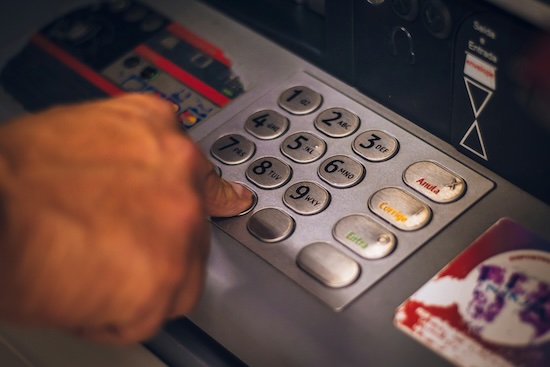
Photo by Eduardo Soares on Unsplash
But, what happens if…
I know, this doesn’t really do much to calm the nerves, right? What happens if you wind up in a vulnerable position? What happens if the airport doesn’t have an ATM and you can’t, for some reason, buy a ticket into town or pay for a taxi with your credit card?
Well, chances are very strong that they’ll still have a currency exchange counter. If you find yourself in this unlikely situation, you can head over to the counter and cash in some US dollars. (It’s always a good idea to bring some along for emergencies.)
However, it’s worth noting that this string of circumstances will probably not apply to airports into which you’d initially be touching down in Europe.
If you’re flying from the States to Europe, you’re most likely landing in a major European destination (including all capital cities). These airports will have bank machines. Some examples:
- Amsterdam Schiphol: There are three currency exchange stations, complete with bank machines, after security checkpoint and one before.
- Barcelona-El Prat Airport: Many ATMs for different Spanish banks in both terminals.
- London Heathrow: Many ATM options to pick up some GBP.
- Paris Charles De Gaulle: 25 HSBC ATMs throughout the terminals.
- Rome Fiumicino: Multiple ATMs in the terminals.
- Venice Marco Polo: YEX for currency exchange is available in the arrivals hall.
- Zurich Airport: The Swiss love their banks, and their Swiss Francs. ATMs are not hard to find.
If you’re arriving into another airport, visit the official website of the airport and you’ll be able to check on ATM and bank services, along with public transit options.
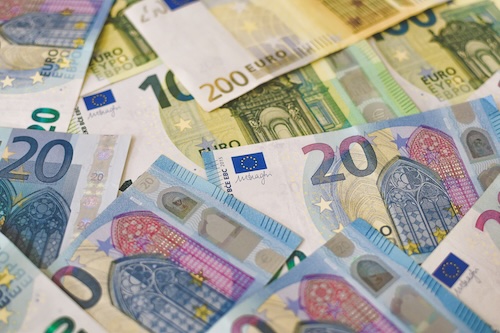
Photo by Ibrahim Boran on Unsplash
Who should buy euros in advance?
If you’ve made it this far in the article and you’re still nervous about traveling without any euros (or GBP or Swiss Francs, etc.) in your pocket, by all means, pick some up ahead of time — it’s not worth worrying about, especially if it’ll prevent you from relaxing and enjoying your flight.
However, do your best to not get taken for a ride by your bank (and avoid these other costly mistakes before your trip to Europe). Understand from your bank what exchange rate you’ll be given and whether or not they’ll be taking a commission or adding a service charge.
Also, be very wary of buying them at your departure airport back in the States. Ask for a printout of exactly what you’ll be paying before handing over any cash — and be sure to know the current exchange rate. (Warning: It’s not going to be pretty.)
If buying euros in advance, whatever you do, don’t overdo it! In almost every case, euros you can get abroad from an ATM will be cheaper than those you can get back in the States. When buying in advance, get just enough to give you a comfortable cushion and get you through a day’s worth of emergency expenses.
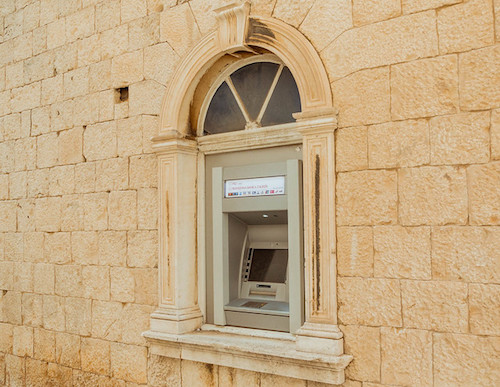
An ATM machine in Europe. Photo: Marco
A few notes about using ATMs abroad
1. Ask your bank about ATM fees before leaving
First, be sure to call your bank before your trip to tell them that you’ll be in traveling in Europe (to ensure that your card will work), and, while on the phone, ask how much you’ll be charged for each withdrawal.
Each bank is different, so know what you’re dealing with. Do they charge a percentage or a per-withdrawal fee? If it’s the latter, you’ll want to make as few trips as possible to the ATM. Here’s a list of questions to ask them.
2. Stick to official bank ATMs
When using ATMs abroad, stick to cash machines that are associated with major banks (look for those located inside bank lobbies or on the side of bank building). Make sure you see a bank logo somewhere on the cash machine or signage.
Steer clear of “stand-alone” cash machines that aren’t a part of a bank, especially in tourist centers. These might actually be associated with overpriced currency exchange services. (Chances are you’ll end up paying a service charge AND get a lousy exchange rate.)
3. When paying with a credit card — pay in the local currency.
It’s likely that at some point during your trip when paying with a credit card, the payment screen will ask you if you’d like to pay in the local currency (euros, Swiss Francs, etc.) or pay in US dollars. While this might strike you as helpful (how nice of them to convert for me!), just say no. The bank is simply adding one more currency conversion for them to skim a little extra cash from. Pay in the local currency.
Stash away some euros for next time!
One last note: If possible, at the end of your trip, try to set some euros aside for your next European adventure. There’s no need to splurge at the airport on the way home (although a Duty Free binge can usually help cast aside the end-of-the-trip doldrums).
Instead, keep your unused euro bills and coins in a special place, like your dresser. Sometimes, a few euro bills in your sock drawer can be all the encouragement you need!
Your tips for buying euros
Do you buy euros before you get on the plane? Tell us what you do when you’re heading across the pond.
Read more of our best European tips:
• Planning a trip to Europe? Avoid these 10 mistakes!
• A guide to buying a SIM Card in Europe
• How long can you stay in Europe with an American passport
This article was edited and updated on April 30, 2024.

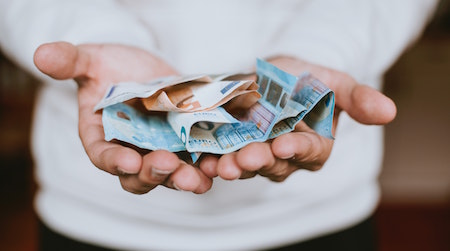


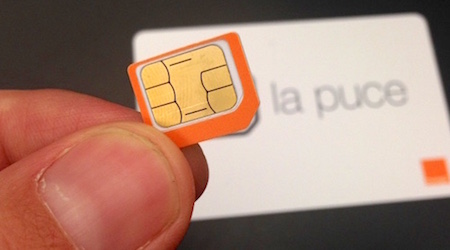



I have the master card American Airlines. It doesn’t charge a fee just the difference in Euros and dollars. It does charge a fee for getting euro from an ATM
Not to look like I’m a shill for the company, but Charles Schwab offers accounts that are no fee, no minimum and which refund any ATM fees that are charged by the ATM operator. It comes in the form of a checking account with a brokerage account attached (I keep a couple of hundred in the brokerage).
Before I travel, I transfer funds from my US bank to the Schwab account and use its debit card in overseas ATMs. That way, bank exchange rate, no conversion fee, and no ATM fees.
Heading straight to the nearest ATM at the airport to get Euros is a HUGE rip-off! I’ve done this before and the exchange rate along with the fees charged are far more than what you would pay exchanging ahead of time in the US.
I suggest you modify your advice.
It depends. I have landed in Venice on a Sunday a few years ago only to find the ATM had no more funds. Had to use Cash Ex which cost me a 25% premium. I was in Bruges a few years ago and could not find an ATM so had to pay a 20% premium to the telegram store. I have been to Europe over 20 times and find it best to have at least 100 euros preferably in smaller bills. Also when using an ATM get an odd number of euros, ie 135 not 100 or 150. Due to Covid its been a couple of years, but I think the Euro will recover quickly. Also if you expect to go again, keep a few handy at home.
I traveled to Egypt and attempted to use my ATM card when I got there. Due to a glitch, I was not only unable to withdraw from my account but my card became locked. I attempted to get this issue fixed by my bank but all I was told was that I would have to use it in an ATM (THEIR ATM! In the US!) in order to correct the problem. I was, in fact, stranded in the foreign country without access to cash. Luckily I had friends with me and they lent me cash as needed (it was needed, for some things) and I used a card for everything else. Lesson learned: I will always bring at least some local currency when I depart, just in case.
Today’s exchange rate dollars to euros is $1.02 to one euro. I hotfooted over to my Truist branch when they told me they have nothing more than a one-time $10 fee. I asked about the exchange rate and and was told, “Oh, we use today’s!” Made me very happy until they informed me that “today’s” was $1.08. Not in real life, of course. In real life, it’s $1.02 -not so at their banks. So they’ve added their 5-6% right on top. Plus the $10 fee! Thanks, but no thanks. I’ve been pleased with the rate I’ve found at the Rome Fiumincino airport and have been lucky to find ATMs in the city offering the posted daily rate plus a flat fee of 2-5 euros for a 200 euro withdrawal. (That’s 1-2%.) My advice, if you’re traveling to Italy: get your euros at the airport ATM, and then as needed in the city. The only caveat is to decline the dynamic exchange (which means they get to play with the rate).
THIS INFO IS INCORRECT, IF YOU USE YOUR DEBIT CARD AT AN ATM IN EUROPE, EVEN IF ITS YOUR BANKS ATM, THE CHARGE YOU A FEE, AND 3% OF WHAT YOU PULL PLUS THE EXCHANGE RATE, SO ITS BEST TO GET YOUR EUROS AT AN EXHANGE PLACE BEFORE HAND AT THE BEST RATE YOU FIND, TRUST ME ON THIS, I WENT TO GREECE THIS SUMMER AND CHASE KILLED ME WITH THE FEES AND THE 3% EVERY TIME I USED MY DEBIT CARD!
I just went to my two American banks today. For 1000 American dollars they will give me 870 euros and 860, respectively. The credit card that I have can be used with no fee and just today’s exchange rate(or the rate on the day I use it). They verified for me that USING AN ATM OVERSEAS IS AMONG THE WORST MONEY EXCHANGES YOU CAN MAKE. That’s because they will incur fees for the convenience of using an ATM, which is also a safety measure for the traveler (?) because he/she doesn’t have to run around with a ton of cash.
I am always perplexed by articles such as this one that says going to an American bank to trade is the worst thing you can do. As far as I know the two worst things are using the kiosk at the airport, using a money trader at an office on the street and using the ATMs. If I’m wrong tell me about it.
Every year for the past decade I’ve been flying to Munich, Germany non-stop from SFO. I never ever take euros with me, but rather go directly to the travelers’ desk at the airport where municipal train tickets can be purchased with a credit card. Then I use my ticket to get into the city and at some point, usually the next day, I go to an ATM and withdraw euros there, This past Oct./Nov. 2019 the max I was allowed to withdraw at the Sparkasse was only 200 euros each time — that was a surprise! The euro was worth about $1.10 that month I was there…..staying steady! I also discovered at the weekly open-air market in Bologna, Italy that it’s possible to use a credit card to buy at least shoes! Possibilities!
Hi Jennifer,
I love these tips! Thanks for sharing. That’s interesting to hear that some European markets are taking credit cards now. I think that might still be pretty rare depending on the city.
My travels land me almost yearly in Munich, Germany. I carry abroad only my VISA card, debit card, a check for the return bus from the airport SFO and about $40 – 50 in cash for petty expenses at the SFO airport going and returning. Once I arrive in MUC, I can go to a desk where I use my credit card to obtain tickets for the local municipal transportation system. I usually take this opportunity to also book any other trains, etc. that I already know that I need for the month that I’m there in Europe — this saves me another standing in line at the main train station or at a travel agency. Once I arrive in the city, I have the credit card to use for anything I need that evening (not much when I stay with friends, but helpful if I still want to dine out). Not until the next day or even the day after do I go to a nearby ATM of a well-known bank and collect an amount of Euros to last me several weeks. Wherever I go, I always ask if I can pay with my credit or debit card, as it saves my cash for those occasions when I absolutely must have it (like the flea market!) Yes, there are fees/charges tacked on my credit items when I see them on my statement here at home later, but they seem worth it for the tiny expense.
My system seems to be pretty much like what you describe above. I’ve honed this over the course of decades, beginning with age 20, and it remains the same, just the flow is greater!
We keep a small brokerage account at Charles Schwab specifically so we can access our money with their ATM card. Not only is there no foreign transaction fee through Schwab, but if the ATM or the bank charges a fee on their end, Schwab will refund it on our next statement. The real beauty of this is that we no longer feel the need to withdraw large amounts of money in order to minimize fees. We can visit the “hole in the wall” as often as we please.
Please remember not all countries use to the Euro. In England we used British Pounds. In Switzerland they have the Swiss Frank Romania and Bulgaria also don’t use Euros. In went to Albania and run out of their currency at the weekend. I wasn’t able to get more local currency until the Monday. Most English debit cards have fees when spending overseas. If you use a travel friendly credit card do try not to get into debt. Some of these are free of fees for spending. They usually charge interest when you have money out of a cash machine.
Well….isn’t everything situational? We’ve been in Europe 4 or 5 times now. One trip we ended up leaving Dublin for the Arin islands, the ATM at the airport had a 20 minute wait, and the B&B we stayed at did not take a credit card, and for some reason the only ATM on the island was down and the Post office was closed. I was GLAD I never leave home without a few hundred. One other point; my bank charges almost nothing for purchasing them; and by watching the exchange rate, I saved about 5% on my first 500€ worth of purchases by getting them on a day the Brexit was messy and the dollar strong.
Agreed. I hate to rely on cards and other people’s ATMs.
We always bring about 400 Euros in 5 Euro notes for tips and small purchases because (1) ATM’s usually only dispense 20’s and 50’s, (2) merchants in Europe HATE to make change, and (3) most banks in Europe will not make change.
Unless you have a stash of Euros left over from past trips to Europe (my mom has a drawer full of coins and bills from our trips to Ireland), I don’t think it’s worth worrying about getting Euros before you go. It’s very easy to find places to convert cash, and the exchange rates will stay the same. Thank you for sharing your tips!
Thanks for your comment, Rachel. I agree! I’m looking at some old euro coins right next to me on my desk. They’ll come in handy at some point, and until then they’ll just get me excited to go back!
Very well written. Thank you very much!
I was planning to buy euros in advance , too. Thank you for changing my mind. I am going to visit London next month with my mom. We will be there for 2 weeks. Thank you for sharing such an interesting information! Best regards!
What about buying them when the Euro to dollar exchange rate is low? I am traveling to Europe next summer and noticed the rate is really good right now. Is there anyway to know what the rate will be next summer?
Hi Cami, That’s an interesting question, and one we need a crystal ball for. Some financial analysts are saying that the euro should come close to equal with the USD in 2016. When we wrote an article earlier this year about the euro dropping, it was at $1.17, and analysts said it could fall to $1.06 by the end of 2016. Right now it’s at $1.07, so that’s a pretty close prediction! http://www.eurocheapo.com/blog/dollar-roars-back-making-europe-great-deal-us-travelers.html
Looks like it’s down to $1.04. Do you ever think the dollar with exceed the Euro?
Right now experts are saying the euro and dollar could be equal sometime in 2017. I think it’s a strong possibility, but either way, it is now cheaper for Americans to go to Europe than it has been in years!
Ha Ha!! Do that and you’ll be rich.